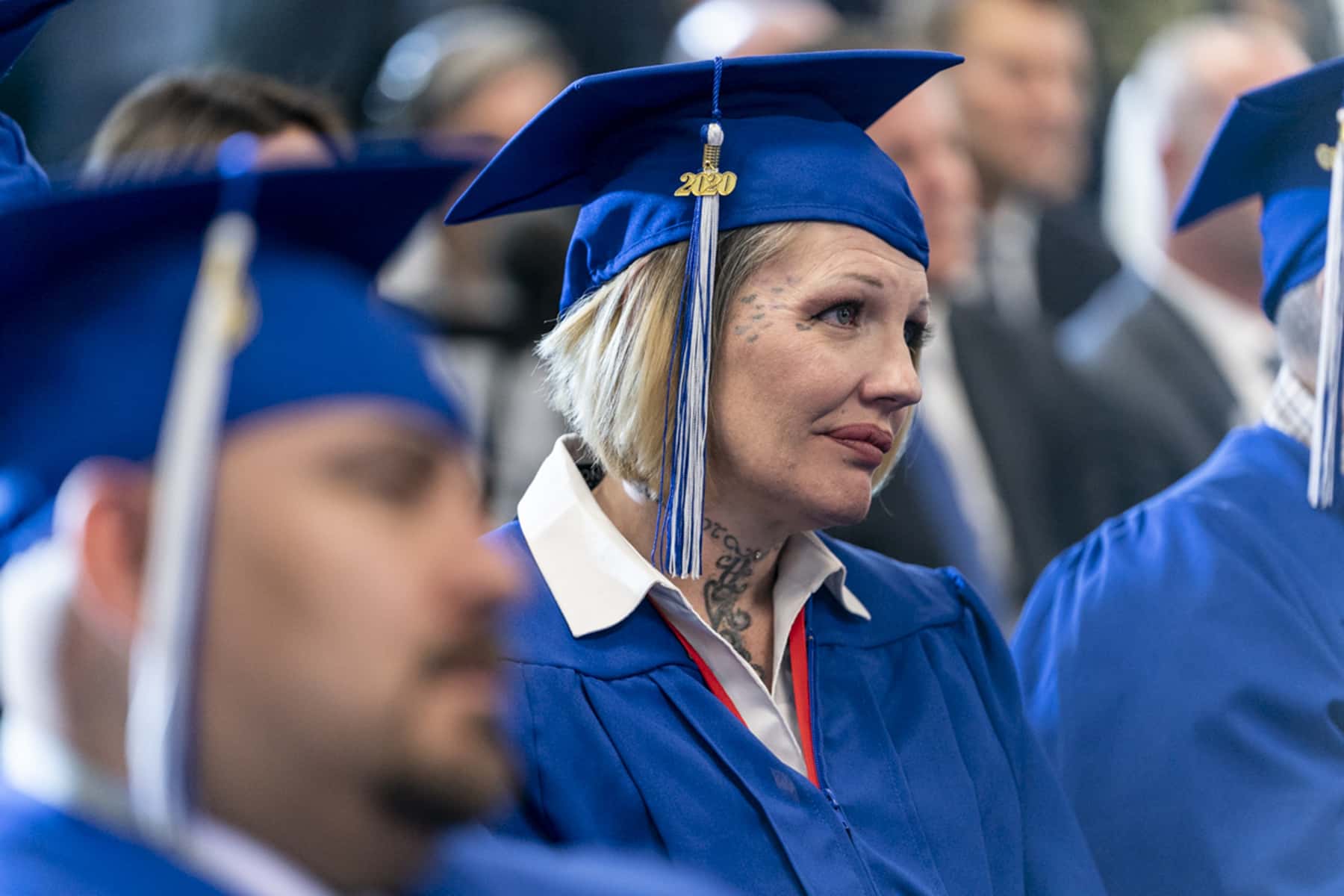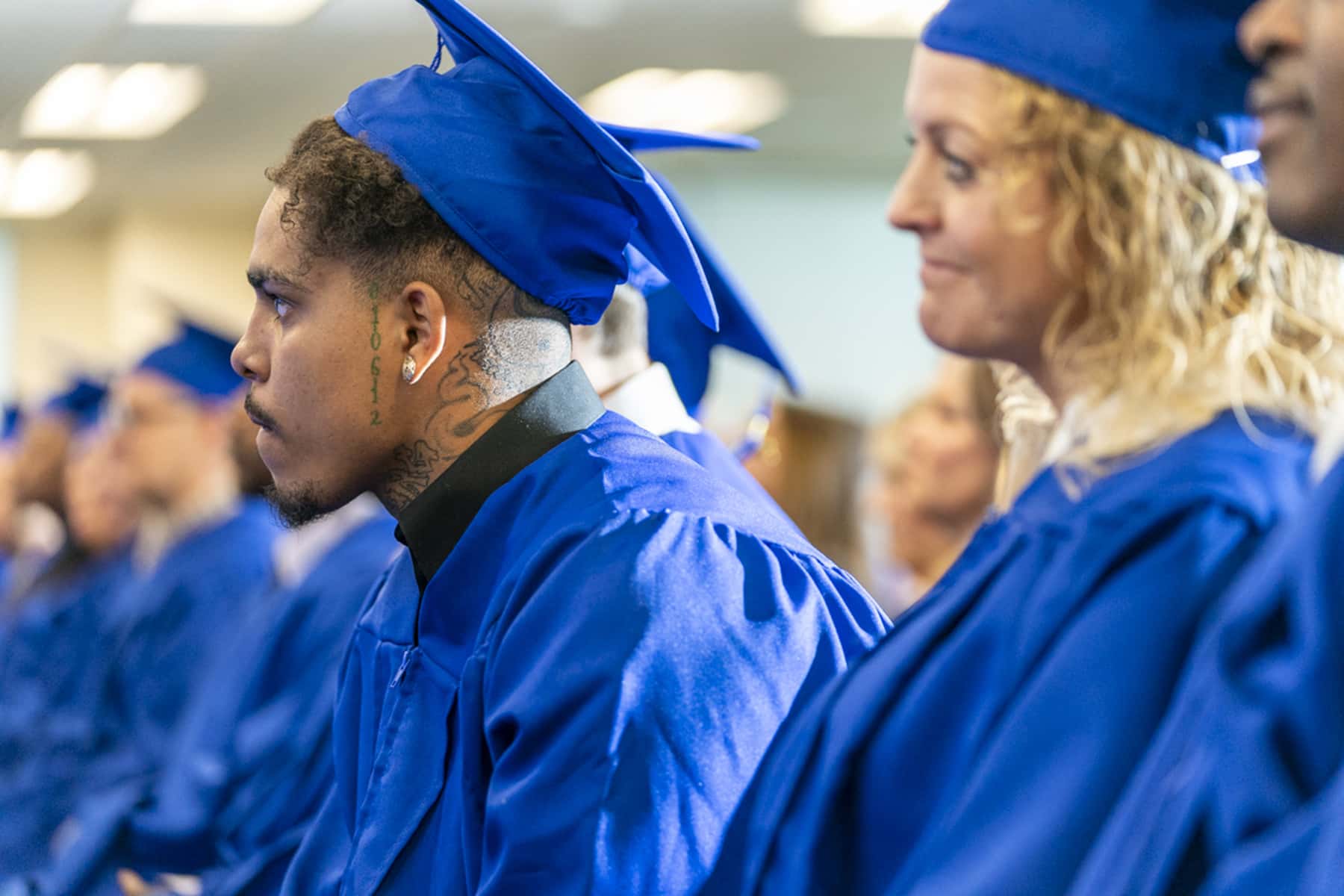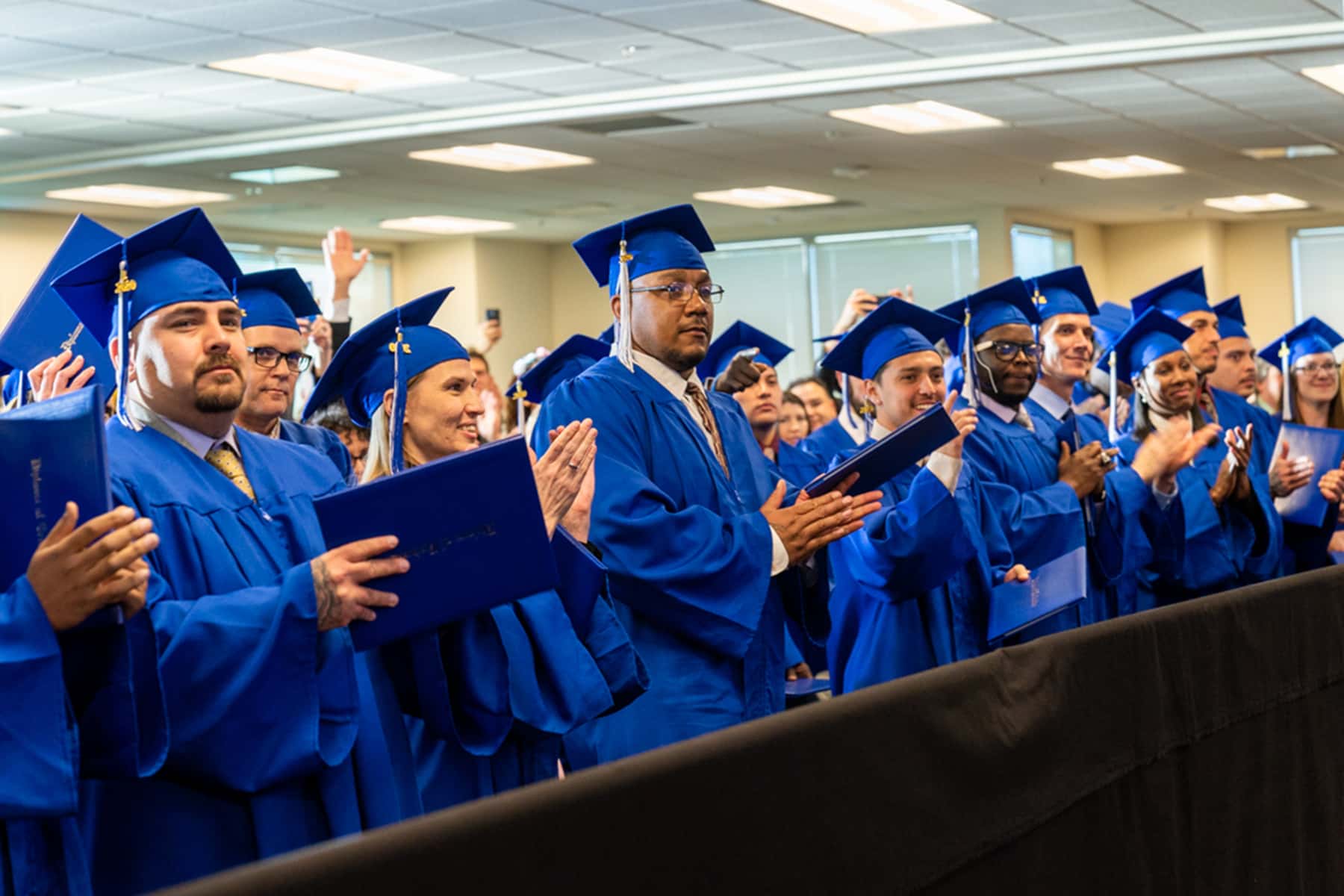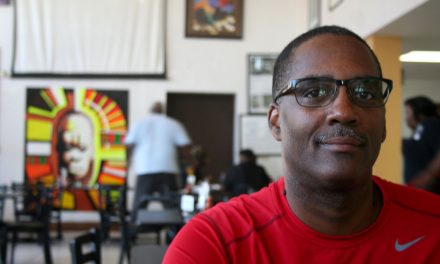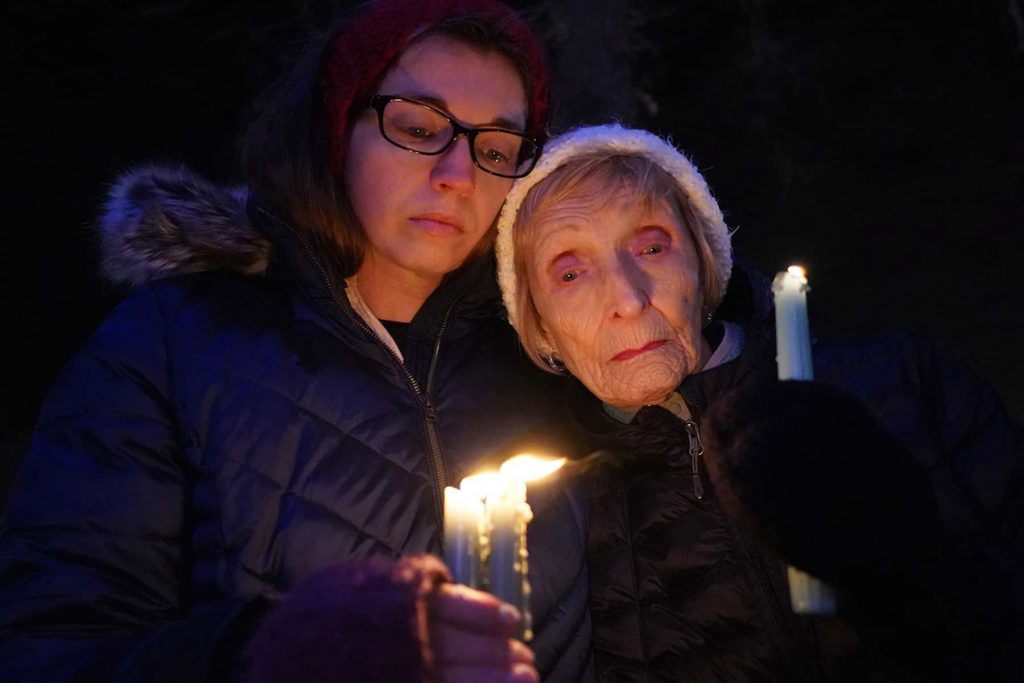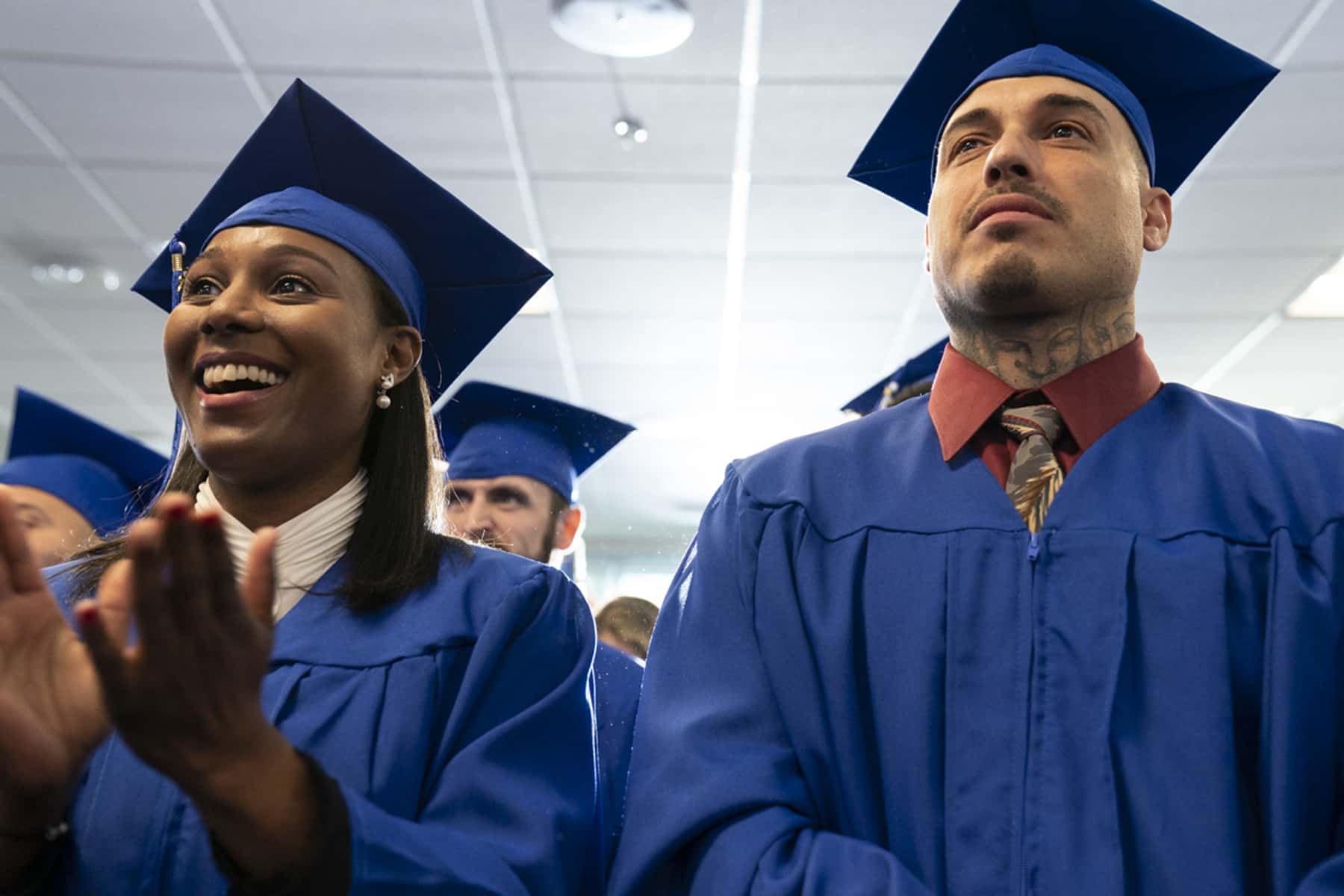
Prison inmates around the U.S. are getting the chance to do something that was almost unheard of a generation ago, pursue a college degree while behind bars and with financial support from the federal government.
Inmates in 42 states and Washington DC can now get federal grants to work with colleges and universities to earn trade certifications, associate’s degrees and even bachelor’s degrees. And the programs are expected to become even more popular, thanks to a bipartisan effort to let prisoners use federal Pell Grants to help pay for higher education classes while incarcerated.
A grant expansion announced by the Biden administration will bring the number of participating colleges and universities up to 200. Todd Butler, the dean of arts and sciences at Jackson College in Michigan, says many prison officials, from wardens to guards, were skeptical when he first started teaching prisoners in 2012.
“Corrections departments are set up for one thing, and that’s safety. That’s what they’re designed to do. [College classes] are not what they’re designed to do,” he said “But the longer you work at a facility, the staff starts to see a change in the inmates. Once you start a higher education program in a prison, the students in that program become scholars. They begin behaving differently. They see a future for themselves that they’ve never imagined before. It changes things. We watch folks slowly become believers in the system.”
Pell Grants are awarded to college students on the basis of need and, unlike loans, do not have to be repaid. The maximum award for Pell Grants for all college students is $6,495 for the 2021-2022 award year.
Shift in crime policy
That Second Chance Pell grants are now growing under President Joe Biden is a remarkable turnaround, considering that in 1994 it was Biden’s signature crime bill that blocked prisoners from getting Pell Grants in the first place. But it reflects a major shift in criminal justice policy over the last decade, as both liberals and conservatives have questioned get-tough policies on crime and have instead pushed measures to help inmates get ready for productive lives once they leave prison.
The issue resonates with policymakers from all political backgrounds, says Margaret diZerega, the director of the Center on Sentencing and Corrections at the Vera Institute, which is providing technical assistance to help with the rollout of Second Chance Pell programs.
“Access to post-secondary education in prison reduces recidivism rates, and people who participate in these programs are 48 percent less likely to return to prison,” she said. “Most jobs require post-secondary education. Given that 95 percent of people are going to be returning to our community from prison, these kinds of programs set them up to be able to pursue employment and be able to provide for themselves and their families.”
More than 22,000 inmates have participated in Second Chance Pell programs since 2016, and some 7,000 of them have earned a professional certificate or academic degree. It’s not known how many of the participants continued their studies after they left prison. The program also attracts support from people concerned about racial inequities, because more than a third of students in Second Chance Pell Programs are Black, compared to just 13% on college campuses.
Overall, 59% of Second Chance Pell students say they are not white, compared to 48% of higher education students overall. At the same time, though, only 11% of Second Chance Pell students say they are Hispanic, compared to 20% on traditional campuses. And white students still make up a higher percentage of students taking Pell-supported classes (41%) than their overall prison population (31%) would suggest.
A Michigan success story
Jackson College is a long-time community college that recently expanded its mission to include four-year programs. Before the 1994 ban on Pell Grants for prisoners, it had a sizable prison-based program. It started offering classes in state prisons again a decade ago at the request of the state’s corrections department.
Those first classes, though, had to be paid for by prisoners and their families, a major barrier to enrollment. Butler and his team talked to 450 potential students, but only enrolled 17 in their first class. Still, the program attracted money from philanthropies that paid for inmates’ tuition, and the program began to grow.
When the Obama administration mulled an experimental program to extend Pell Grants to prisoners, getting around the 1994 ban, people involved in the program at Jackson College met with then-Education Secretary Arne Duncan and other Obama administration officials. Eventually, Jackson College became one of the first to participate in the experiment, in 2016.
The Trump administration doubled the number of institutions that could participate in the program under then-Education Secretary Betsy DeVos. And President Donald Trump signed a law that included an overhaul of the federal aid application process and the removal of the 1994 ban.
The Biden administration is now in charge of writing rules for the Pell Grants once the ban is lifted. Those rules are expected to go into effect in July 2023.
COVID-19 hits prisons
Enrollment in Jackson College’s prison-based programs reached as high as 800 before the COVID-19 pandemic. Classes were taught at eight Michigan prisons, including a federal prison. The pandemic hit prisons hard, and inevitably that led to disruptions in the college instruction programs too. Many of Jackson College’s students were paroled early to reduce crowding in the facilities.
Meanwhile, visitors were severely curtailed, and college instructors could no longer meet with their students in person. Instead, teachers had to prepare video recordings or lecture via closed-circuit TV, because students were not allowed to take the classes online. The lack of in-person meetings also meant that the college couldn’t recruit new students, and enrollment has since dipped to around 500 students. But prison officials helped keep the program running even with the difficulties.
“Our corrections partners were saying: ‘It is extremely important that we keep this education program, because [the prisoners] needed it. They need some hope. They need to keep busy. They need to keep progressing.’ We heard that, and we agreed with that,” Butler said.
Remote learning
The pandemic forced Jackson College and Michigan prisons to increase their reliance on technology, which has become a source of some controversy in other locations. Ashland University, a Christian college in Ohio, in particular, has drawn scrutiny for offering courses almost exclusively on tablets, raising questions about the quality of its instruction.
It has become one of the biggest providers of courses under Second Chance Pell, with operations in 13 states, according to the Marshall Project. A spokesperson from Ashland University did not return a request for comment. But for Jackson College, Butler says, technology can be as much a barrier to students learning as a tool, especially when there are no college staff to help inmates use their computers and programs.
Ideally, Butler adds, inmates would be able to get in-person instruction but also be able to use online resources for research with their projects. Still, Butler said he was encouraged by the prison-based courses.
“For many of us, this is the most rewarding work of our lives. It is completely unlike any other place you will teach,” he says. “Anyone who has ever watched or taken part in a prison graduation ceremony will leave rethinking what is possible for the incarcerated population.”
Daniel C. Vock
Shealah Craighead
Originally published on the Wisconsin Examiner as Feds expand Pell Grant program for prisoners working on college degrees
Donate: Wisconsin Examiner
Help spread Wisconsin news, relentless reporting, unheard voices, and untold stories. Make a difference with a tax-deductible contribution to the Wisconsin Examiner

